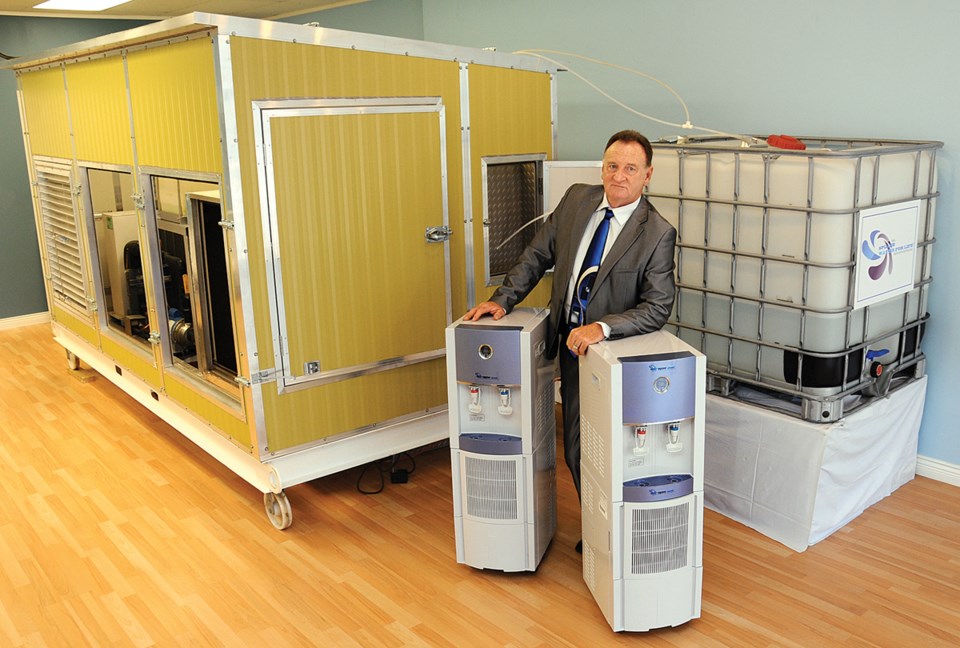A new machine is making water availability possible even in the most remote areas around the world.
The atmospheric water harvester creates drinkable water from the air through a process similar to a regular dehumidifier.
"In dehumidification, you're extracting moisture from the air and then disposing of the water," said Phil Fraser, vice-president of Splash Water Canada and creator of the machine. "In my technology, we extract the moisture from the air, we store it, then purify it and make it into drinking water."
The machine, which is on display in a showroom at 113 East First St. in North Vancouver, operates through three moving parts and then a pump and a condenser, like a refrigerator, he said.
"We pull the air into the machine. Hot air on a cool surface makes the surface sweat so the coil in our machine is cold," said Fraser. "We pull warm air into the machine and it makes the coil sweat and the water drips down into a storage tank. And then from that process it's a matter of pumping the water through the purification system and to the dispersal tank."
Once the machine is full, it automatically shuts off and once an hour, it turns back on to re-purify the water through the filters.
"So you can basically go away for a month or two months and come back and the water is still fresh and ready to drink," said Fraser.
The water must pass through multiple filtration systems, including ultra violet light, prior to the consumer drinking it.
"We use a Food Safe technology so the water that is extracted from the air is never in touch with any materials that would contaminate it in any way," said Fraser.
The idea for the machine came to Fraser in the most unusual way.
"I was in a boardroom meeting and I was looking out the window and I noticed an air conditioner dripping water down and I thought if there's a way that we could contain that it would be helpful for everybody," said Fraser. "My first thought was to use it just for agriculture, for plants or watering lawns, and then I expanded it into the drinking water process."
It took Fraser approximately a year to come up with the prototype and three-and-a-half years to come up with the production model.
"Our home office machines generate up to eight gallons per day, and our commercial machines generate up to 3,000 gallons per day," he said.
Both machines can be run from a local power source, such as a wall plug-in, but the larger commercial machines can also be run using an outsourced motor of a vehicle, or a six-horsepower gas or diesel engine with a shaft and pulley, said Fraser.
"It can be used for disaster relief, areas where there is no electricity, and the likes. Or if the cost of fuel is cheaper than the cost of electricity, obviously it would be wise to use it in that context as well," he said.
The timing is right with so many water needs around the world right now, said Fraser, and they are getting inquiries from all around the world.
"The interest is definitely there, the needs are definitely there and the product is ready to go," he said. "We're in full production and we can certainly fill anybody's needs as far as supply of the machines and the training on the operation."
The machines were first introduced on the North Shore, but Fraser said they are also being introduced into the United States, Florida in particular. He's also had interest from Indonesia, Cambodia, China and India.
"Its viable and cost effective, and it definitely produces the best drinking water available," said Fraser.



